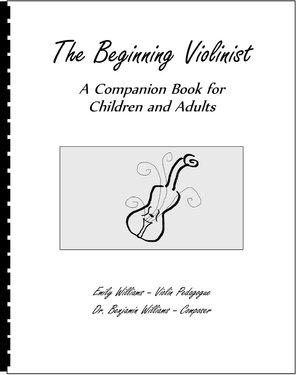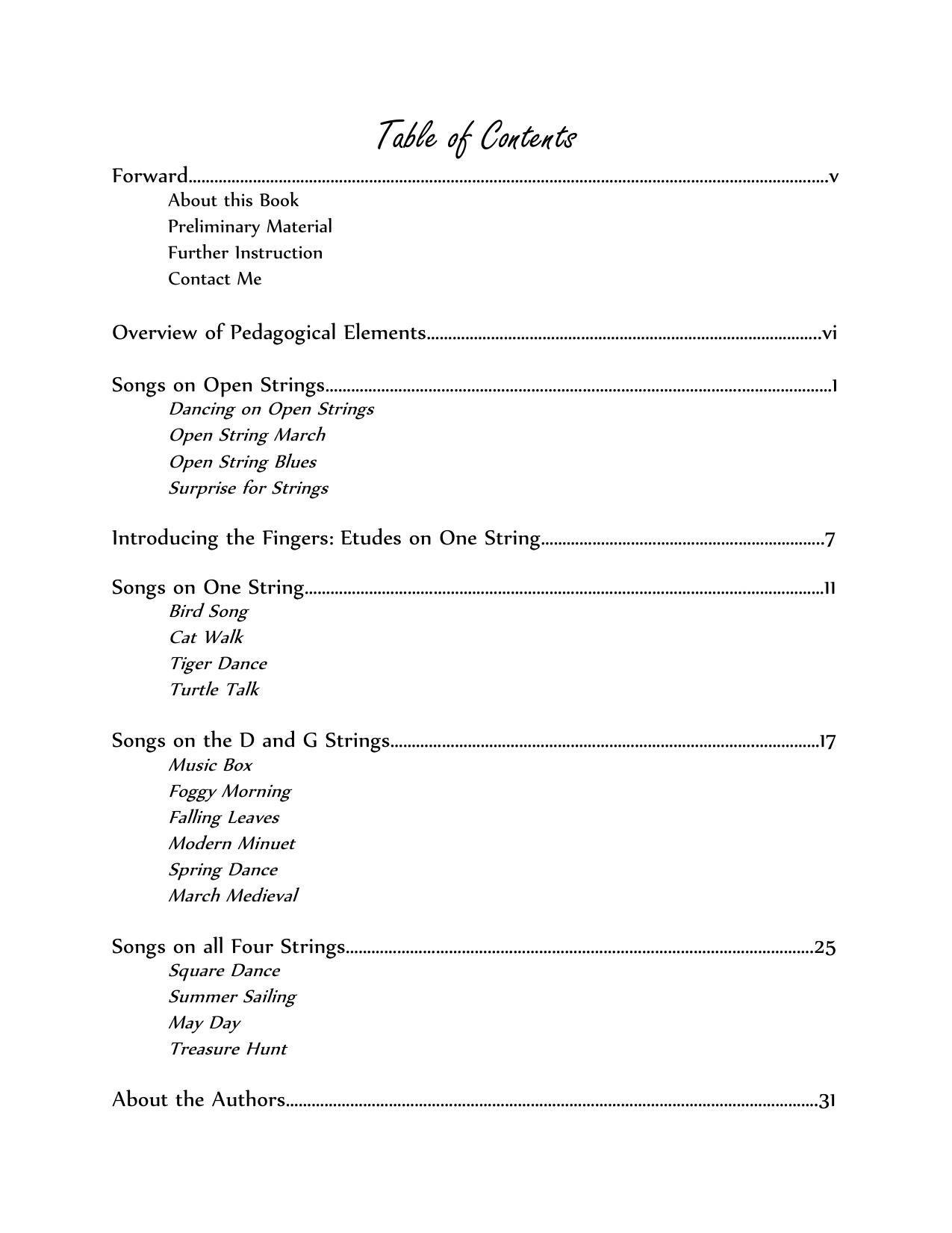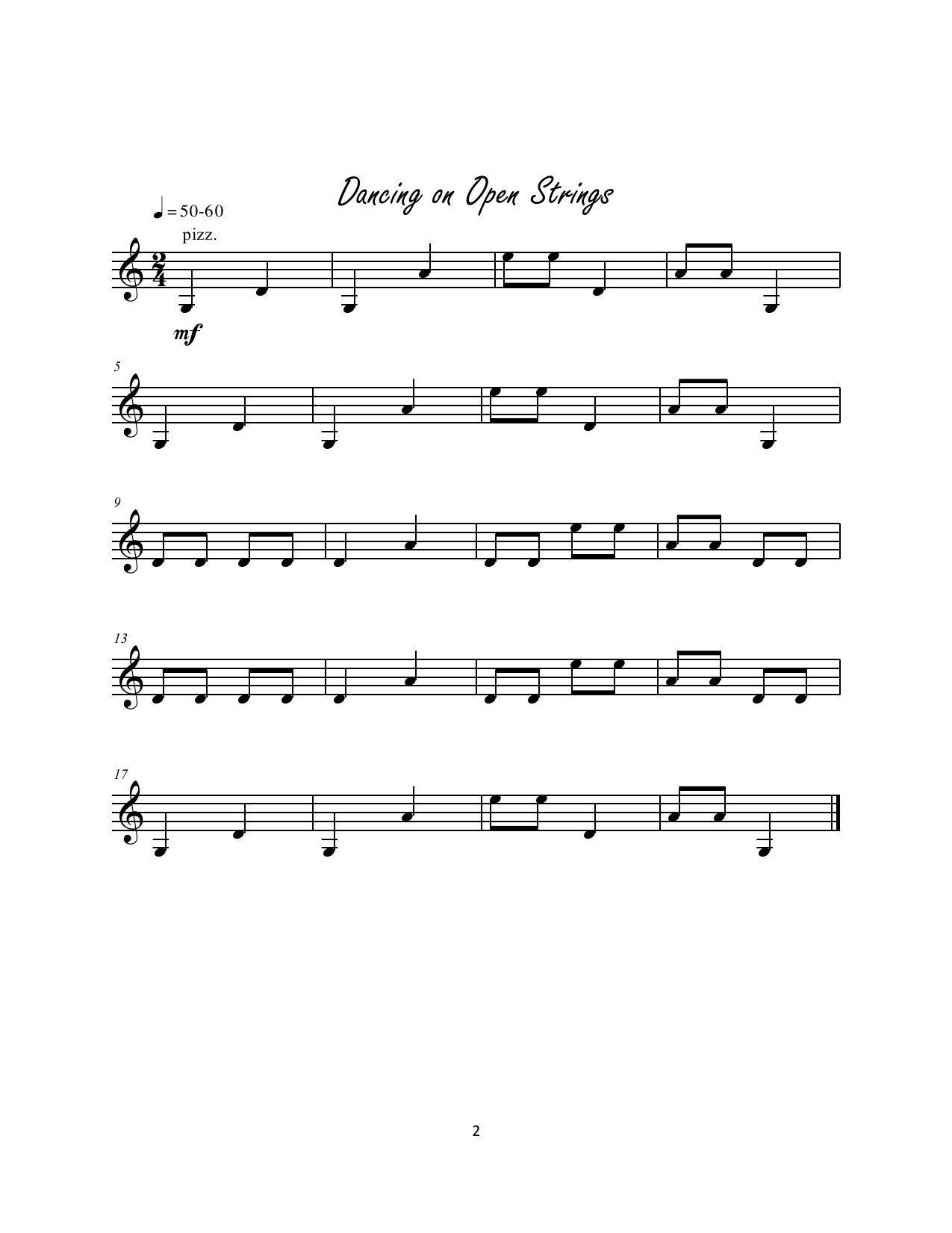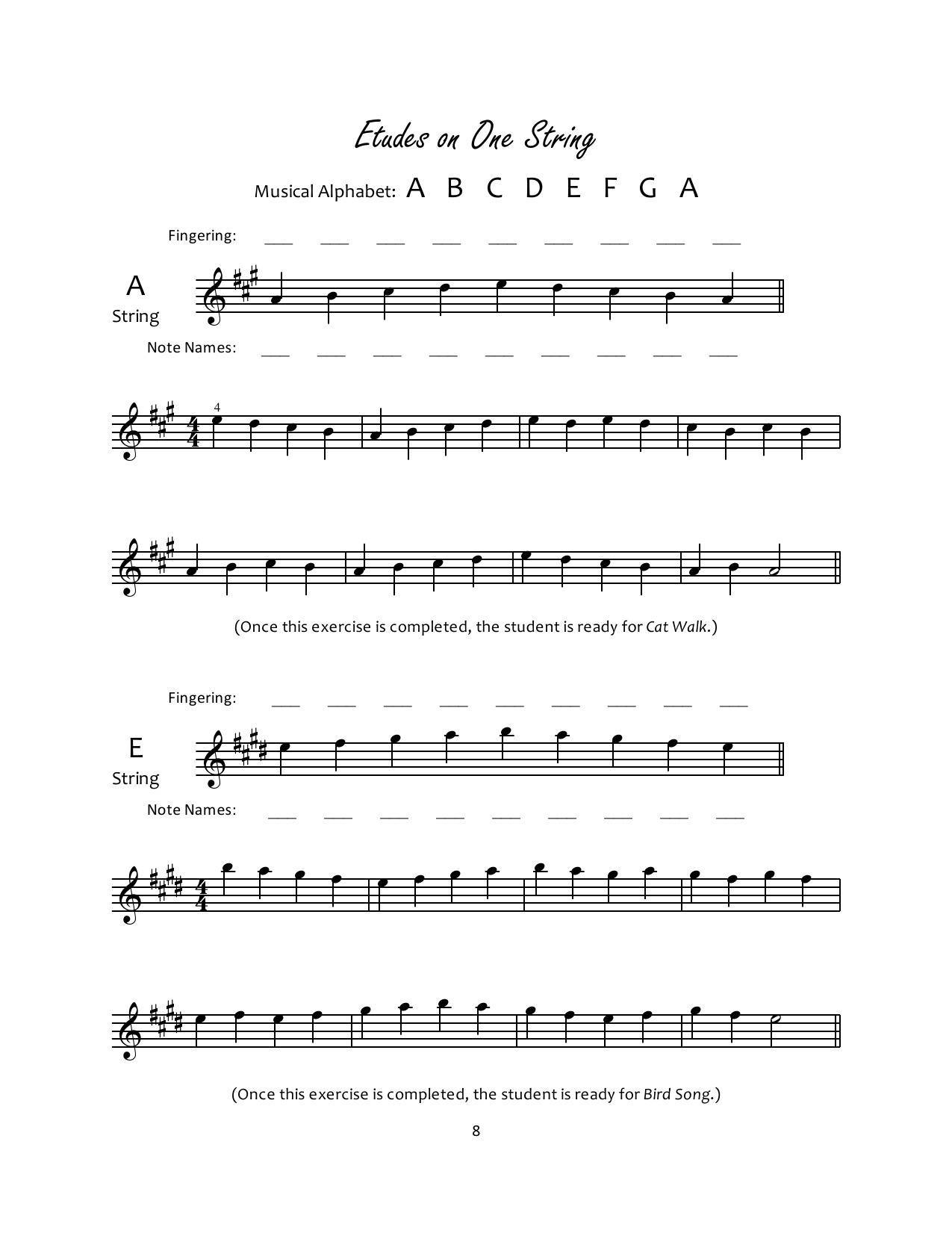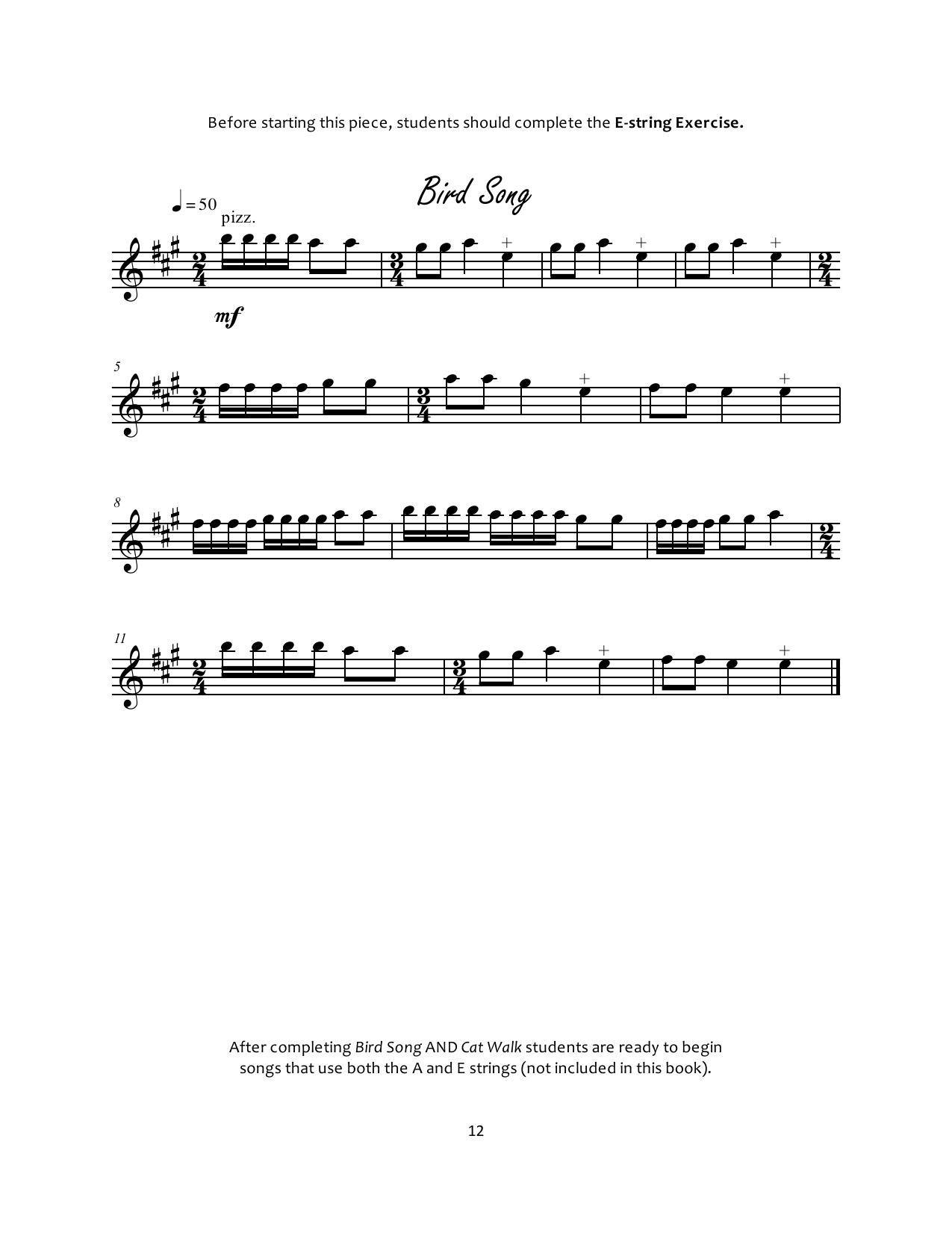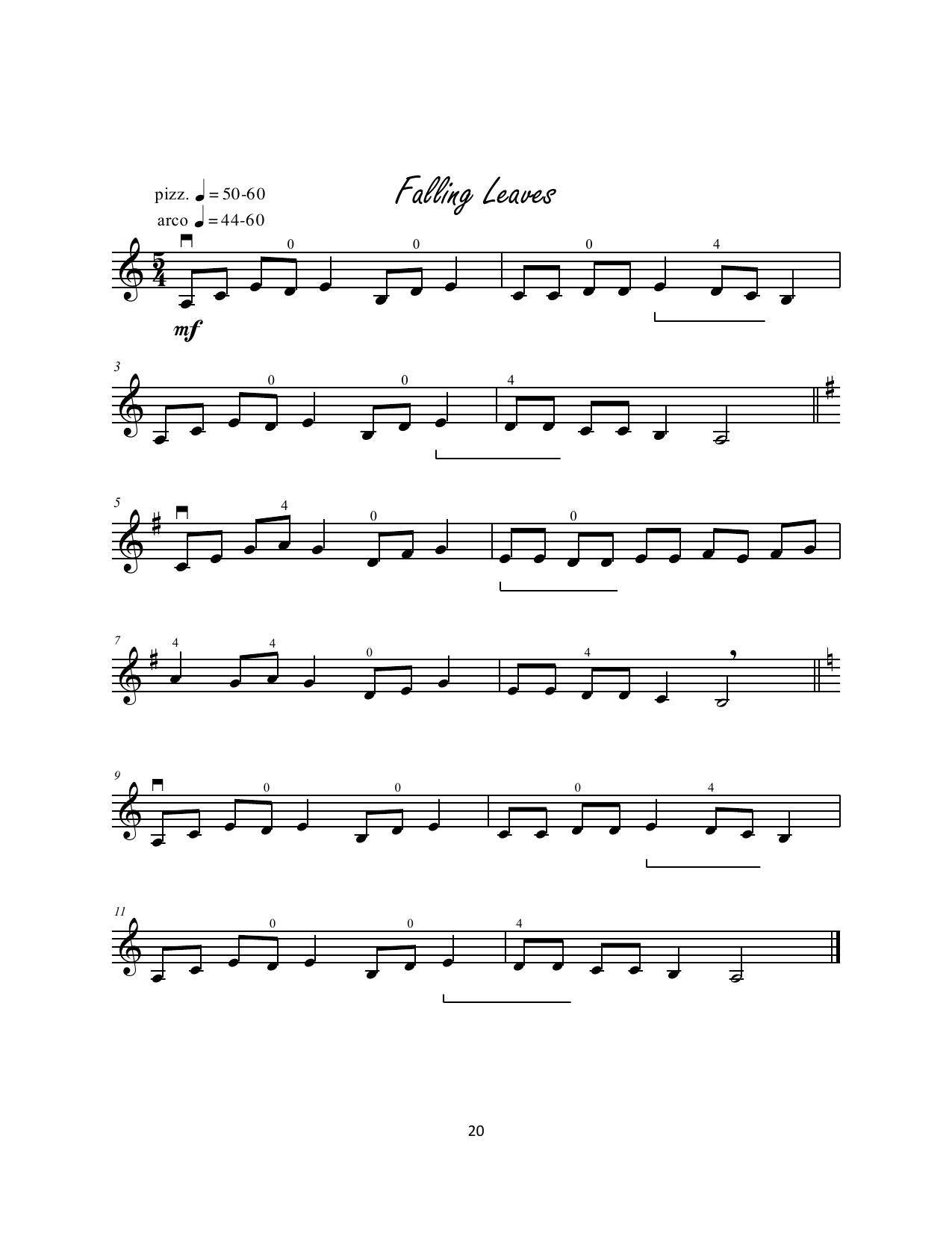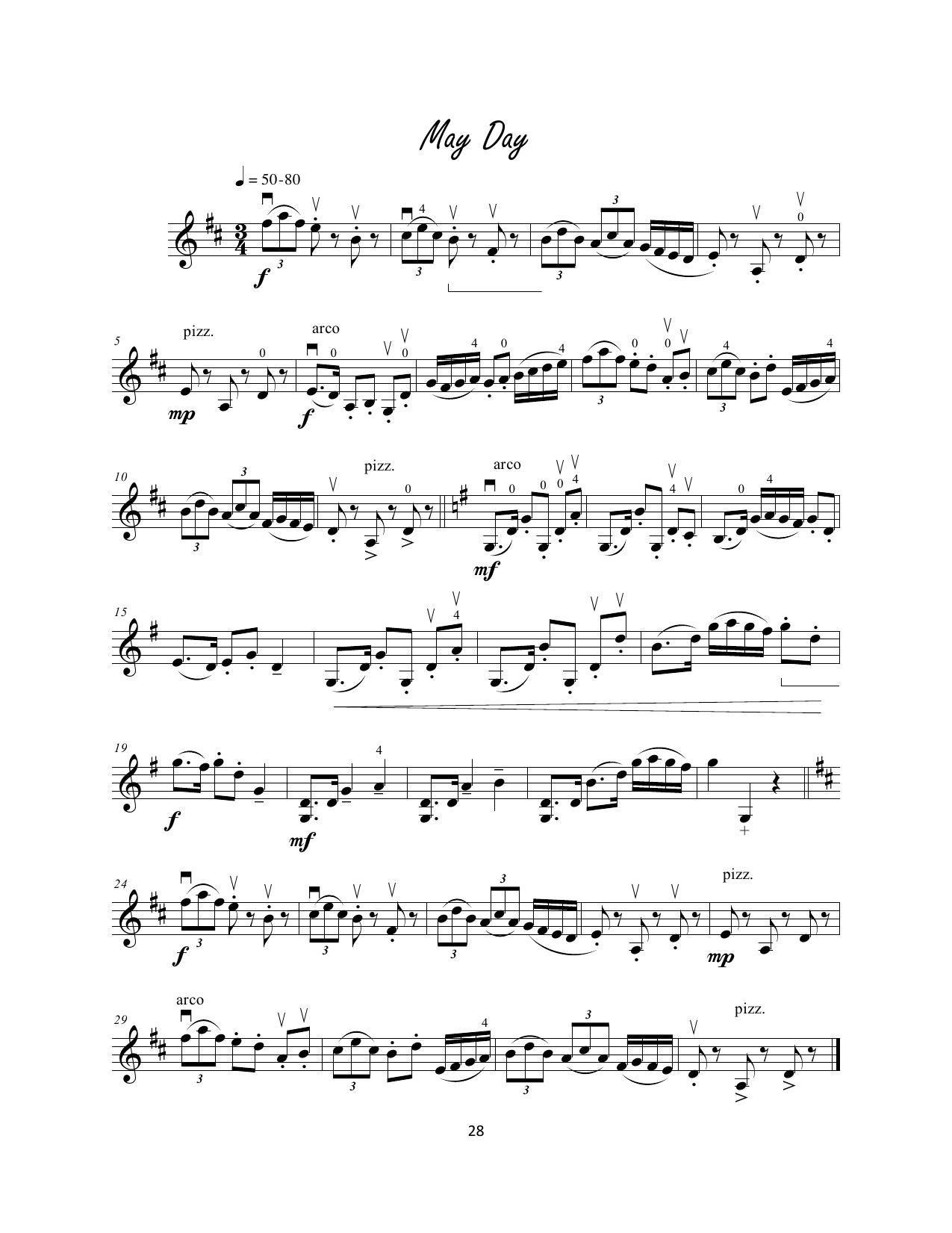The Beginning Violinist: A Companion Book for Children and Adults
About the Book
The Beginning Violinist is designed to be used in conjunction with other beginning violin method books to fill in the gaps that are often left by even the most popular method books available on the market today. Emily co-authored this book with her husband, composer Dr. Benjamin Williams, as a resource to use with her own students and is now making it available to you!
All of the études and pieces presented in this book have been tested and tried on Emily’s own students. They have proven to be successful in addressing many of the problems she found with the current method books available on the market, and her students enjoy them too!
Look Inside
Overview of Pedagogical Elements
Open String Songs
Note reading comes more easily to students who first learn to read and pluck the open strings of their instrument, so you will find several songs dedicated to this purpose. They progress in rhythmic difficulty and can be used in order, or feel free to jump ahead for students who are more proficient.
Left Hand Pizzicato
Left hand pizzicato is considered an extended technique by most, but there’s no reason it needs to be excluded until a student is ready for virtuosic music. Introducing students to this technique as a beginner is both practical and fun!
Introducing all 4 Fingers
I include short études that introduce all the fingers by string. These études have the student “building down” from the pinky rather than “up” from the first finger. This is intentional as it fosters correct technique and hand set up.
Songs on One String
After a student has completed the étude for a particular string they can progress onto a song that only uses those notes. Except for Cat Walk these songs should be plucked because of their rhythmic difficulty.
Pieces on the D and G Strings
The middle portion of this book focuses on pieces that are just on the D and G strings as supplemental material to beginning method books which focus on the A and E strings. You will also find pieces that use all four strings at the end of the book.
Changing Meters
Another skill that’s usually left until a student is more advanced is the ability to correctly interpret changing meters within a piece. The pieces presented in this book introduce this concept in simple songs that even a young child can master.
Changing Keys
Like changing meters, students will be exposed to pieces that change key.
Book Reviews
Here’s what parents and students have to say about this book:
Leigh (parent)
I have enjoyed listening to my daughter play the compositions from The Beginning Violinist. She has learned three songs: Cat Walk, Bird Song and Tiger Dance. While listening to her play, I realized she did not stumble through the songs, but quickly responded to these creative, one-string arrangements with competence and confidence. My other daughters [under a previous teacher] started out on songs that used two open strings. Comparing the different musical beginnings of my daughters, I appreciate these one-string compositions to facilitate a student’s focus on learning their notes and rhythms.
I saw my daughter enjoy listening to the sounds she produced from using Dr. Williams’ songs. Since she was working only one string within each song, she had the capability to combine her new found skill with her imagination while playing (for example, she smiled while playing Cat Walk because she could “see” what the cat was doing!).
I have seen my daughter learn notes by sight more quickly than my other daughters who had a different educational approach. [The repertoire of The Beginning Violinist] has allowed my daughter to gain the ability to blend her notes and rhythms on three strings with agility.
Nancy (adult student)
As an adult, absolute beginning violin student, I really appreciate learning all of the open strings of my instrument at once. I feel learning this way opened the door of available music much wider. These selections allowed me to experience the entire finger board of my instrument. The selections also provided experience in different techniques as well. I would highly recommend them to complete the beginning violin experience.
Emily (college adult student)
I like the idea of teaching all open strings [to start]. I think it lays a good foundation knowing what the open strings should sound like, and also they can help later on when playing a note that is an open string note and you are trying to make sure it is in tune. I also like the idea of learning all four fingers together because it helps me learn what my hand should feel like when playing finger patterns.
I like how the pieces [in The Beginning Violinist] introduce and incorporate a lot of concepts at once. Like in March Medieval there are the accent marks, staccato, slurs and dynamics. At first it was challenging, but when I started to get the hang of it I felt that I had really accomplished something.
I think [the songs] have contributed to my learning in the fact that I’m using more strings than just A & E and that gives me a feeling of being more competent with the instrument. When I first started lessons I considered my musicianship nonexistent. Now I feel proud of my accomplishments in my musicianship as a late learner in life.
Further Instruction
Should you like more guidance on preparing your students to use this book, presenting this material to your students, or general teaching strategies, Emily offers Coaching Sessions for teachers at her home studio in Clinton, MS or online via Skype. Coaching Sessions are available for individuals or groups to meet the needs and budget of anyone interested. Please visit playviolinmusic.com for more information!
Contact Me
Emily would love to hear from you and how you like the book. She welcomes questions, comments and suggestions. Emily is also interested in what additional music material might help you better meet the needs of your students for future publications, so please email her at [email protected] with your requests and ideas!
